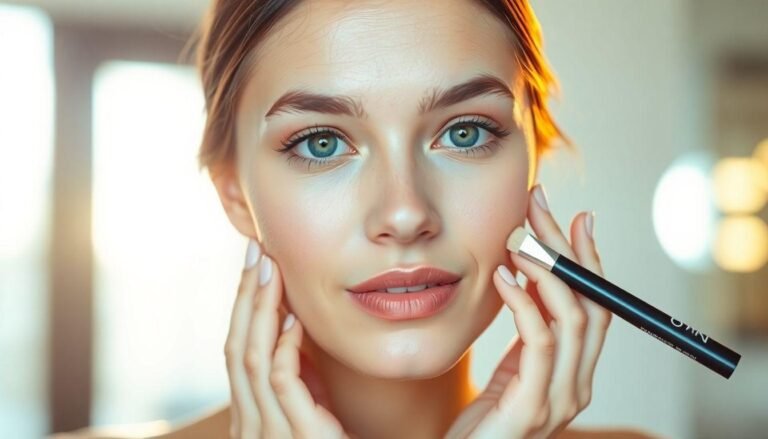Dealing with acne-prone skin while wanting to wear makeup can feel like walking a tightrope. You want to cover blemishes and enhance your features, but not at the cost of triggering new breakouts. The good news? You don’t have to choose between looking good and having clear skin. With the right makeup routine for acne-prone skin, you can achieve that coveted glow without worrying about waking up to new pimples. It’s all about selecting the right products, applying them correctly, and maintaining proper skincare habits alongside your makeup regimen.
Understanding Acne-Prone Skin Before Applying Makeup
Before diving into product recommendations, let’s talk about what makes acne-prone skin unique. Acne develops when pores become clogged with excess oil, dead skin cells, and bacteria. For those with acne-prone skin, certain makeup ingredients can exacerbate these issues.
What sets acne-prone skin apart:
Understanding these factors helps explain why not all makeup works for acne-prone skin, and why a specialized routine matters so much.
Prepping Your Skin: The Foundation Before Foundation
No makeup routine can succeed without proper skin prep. For acne-prone skin, this step becomes even more critical.
Cleanse Without Stripping
Start with a gentle cleanser that removes impurities without stripping your skin’s natural moisture barrier. Look for ingredients like salicylic acid (for active breakouts) or niacinamide (for overall skin health). Avoid harsh soaps that can trigger your skin to produce more oil as a defense mechanism.
Targeted Treatment
Apply any prescription treatments or spot treatments to active breakouts first, allowing them a few minutes to absorb. This ensures they can work directly on your skin without makeup diluting their effectiveness.
Hydrate Strategically
Contrary to popular belief, acne-prone skin needs moisture! Opt for oil-free, non-comedogenic moisturizers that contain humectants like hyaluronic acid or glycerin. A well-hydrated canvas prevents makeup from clinging to dry patches and can actually help control oil throughout the day.
Prime with Purpose
A good primer creates a barrier between your skincare and makeup while helping your makeup last longer. Look for silicone-free, mattifying primers that contain acne-fighting ingredients like zinc oxide or tea tree oil.
Building Your Acne-Friendly Makeup Arsenal
Now for the fun part—choosing the right products that will enhance your beauty without compromising your skin health.
Foundation That Heals While It Conceals
The foundation (literally) of your makeup routine should be non-comedogenic and oil-free. Many brands now offer foundations with skincare benefits specifically formulated for acne-prone skin. Ingredients to look for:
When it comes to application, less is more. Build coverage only where needed rather than applying a thick layer all over your face.
Concealers: Your Secret Weapon
For stubborn blemishes, a high-coverage concealer can work wonders. Look for products labeled “non-acnegenic” and consider those with a slightly dry texture, as they tend to stay put without sliding into pores. Green color correctors can neutralize redness before concealer application.
Setting Products That Don’t Suffocate
Powder products can be tricky for acne-prone skin if they contain talc or other pore-clogging ingredients. Opt for mineral-based setting powders with minimal ingredients, and apply them sparingly, focusing on the T-zone. Setting sprays with aloe vera or rose water can lock in your makeup while providing a soothing benefit.
Color Products: Play It Safe But Have Fun
Blush and Bronzer
Powder blushes and bronzers are generally safer for acne-prone skin than cream products, which may contain oils. Look for mineral-based formulas, and always tap excess product off your brush before applying to avoid heavy application that can clog pores.
Highlighter
You can still achieve that gorgeous glow! Opt for powder highlighters with finely milled particles rather than chunky glitters that can irritate skin. Apply to the high points of your face where breakouts are less likely to occur.
Eye and Lip Products
Good news—eye and lip products rarely cause acne unless you’re allergic to specific ingredients. This is your chance to experiment with color and expression without worrying about breakouts!
Removal Is Just As Important As Application
How you take off your makeup is perhaps even more critical than how you put it on. Sleeping in makeup is one of the worst offenses for acne-prone skin.
Double Cleansing Method
Start with an oil-free makeup remover or micellar water to dissolve makeup. Follow with your regular cleanser to remove any residue. For extra thoroughness, consider using a soft microfiber cloth to gently wipe away the last traces of product.
Weekly Treatments
Incorporate a gentle exfoliating treatment once or twice weekly to prevent dead skin cell buildup. Clay masks can also help draw impurities from the skin and control oil production.
Lifestyle Factors That Affect Your Makeup Performance
Even the best makeup routine can be undermined by certain habits:
These simple adjustments can dramatically improve how your skin responds to makeup.
When to Seek Professional Help
If you’re following a proper makeup routine for acne-prone skin and still experiencing significant breakouts, it might be time to consult a dermatologist. They can help identify if hormonal factors, allergies, or other medical conditions are contributing to your acne and recommend appropriate treatments.
Remember that achieving clear, glowing skin while wearing makeup is absolutely possible with the right approach. Be patient with your skin, listen to its needs, and don’t be afraid to adjust your routine as necessary. With consistency and the right products, you’ll find your perfect balance of coverage and clarity, allowing your natural beauty to shine through without the worry of breakouts.







